The last of the Tsars: on the trail of the ghosts of Romanov Russia
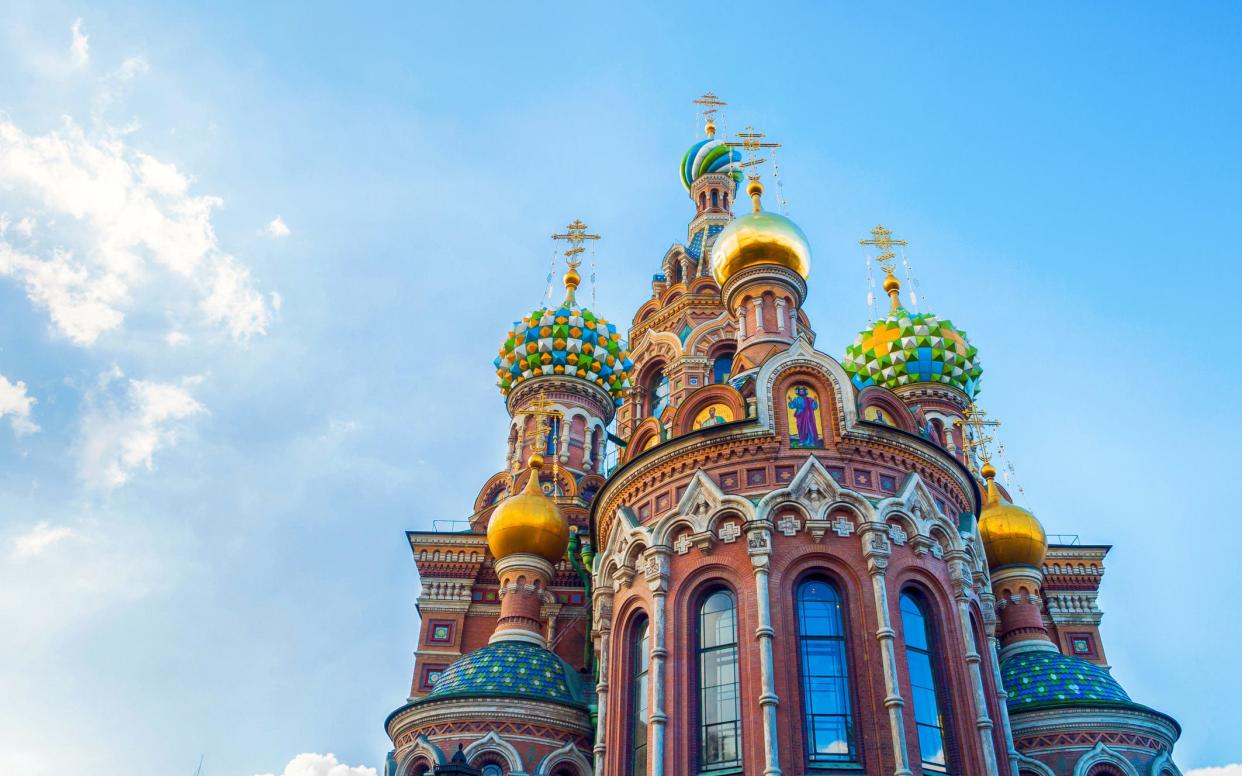
Russia’s 21st-century oligarchs have nothing on their imperial predecessors. With assets of around $250-$300 billion (£190-£230 billion) in today’s money, were he alive now the last tsar – Nicholas II – would be worth more than all of contemporary Russia’s top 20 billionaires combined. And their image of unrestrained excess? Nicholas outdid them all. Among the tsar’s many extravagances were the largest super yacht the world had yet seen, dozens of diamond-encrusted Fabergé eggs, and 20ft-long, ermine-trimmed robes.
Those years of giddy excess came to a halt in the cellar of a house in Yekaterinburg 100 years ago, when the Bolsheviks executed Nicholas and most of his family.
It was a grim ending to an astonishing 300-year dynasty that had been consolidated at the end of the 17th century by Peter the Great, glamorised by Catherine the Great in the 18th and finally doomed by the inability of the 19th-century tsars to adapt to a changing world. But the Romanov empire had held sway over one sixth of the earth’s surface and the tsars left behind them an astonishing legacy – from the entire city of St Petersburg, to the treasures of the Kremlin, the Mariinsky and Bolshoi ballets, and one of the greatest art collections the world has seen.
You can get an insight into this imperial world at a new exhibition on the connections between the Romanovs and the British Royal family, which opens at the Queen’s Gallery on Friday. Meanwhile, another at the Science Museum explores the gruesome details of the 1918 murders. But for a true taste of Romanov Russia, you need to see it for yourself.
Here – in chronological order – is our guide to the legacy of the Romanovs.
Ipatiev Monastery, Kostroma
Following false accusations of treason, the Romanovs were exiled to remote corners of Russia. They eventually found sanctuary inside the walls of the Ipatiev Monastery in Kostroma, one of the ancient towns of the country’s Golden Ring. It was here that in 1613 Mikhail, the first Romanov tsar, received the news that he had been made Russia’s monarch (ipatievsky-monastery.ru).
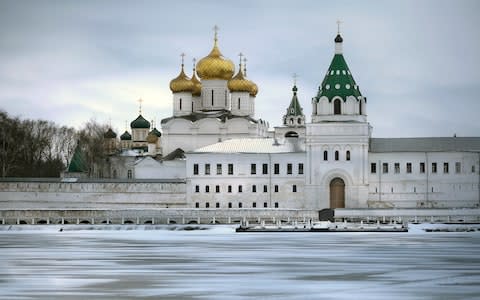
Assumption Cathedral, Moscow
From Mikhail in 1613 to Nicholas II in 1896 the coronations of all Russia’s Romanov monarchs took place under the five gold domes of the Assumption Cathedral in Moscow’s Kremlin. The cathedral is also the seat of the Russian Orthodox Church and home to some of the most precious icons and frescoes in the country. Tickets to the Kremlin Museums (£6) include entry to all the churches inside the complex (kreml.ru/en-Us/about-museums/kremlin).
Peter the Great’s Cabin, St Petersburg
The most ambitious of all the Romanovs – Peter the Great – founded the city that was named after him on a windswept swamp. The first building was a small log hut. Constructed in just three days in 1703 it marks the foundation of Russia’s new imperial city. Today protected from the elements by a brick pavilion, the cabin is open to the public and forms part of the Russian Museum. Admission: £3 (en.rusmuseum.ru/cabin-of-peter-1).
The Amber Room, Tsarskoye Selo
The Catherine Palace in Tsarskoye Selo, just south of St Petersburg, was the Romanov summer residence and its showpiece is Peter the Great’s famous Amber Room. The chamber constructed entirely from amber panels and gold leaf was gifted to the tsar by the King of Prussia in 1716. What you see is not the original – the first panels were looted by the Germans during the Second World War – but the reconstruction, which took 24 years to complete. Admission to the palace: £8.50 (eng.tzar.ru).
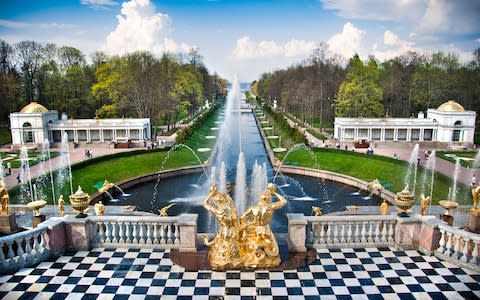
Peterhof Palace
The Peterhof Palace (completed in 1725) was another summer estate that was built for Peter outside St Petersburg. It is famous for its 144 fountains, some shooting out jets 65ft high. Admission: £12 (en.peterhofmuseum.ru).
Kunstkamera Museum, St Petersburg
The bizarre collection of the Kunstkamera, Russia’s first museum, features everything from preserved giants to Siberian shaman drums. The Peter the Great Museum of Anthropology and Ethnography was built in 1727, two years after Peter’s death, to house his cabinet of curiosities, including the skeleton of his manservant and the head of his mistress’s brother. Admission: £3.50 (kunstkamera.ru/en).
Hermitage Museum, St Petersburg
The Romanov succession after Peter the Great became extraordinarily complicated until Catherine the Great became Empress of Russia in 1762 after a coup d’etat against her husband, Peter III. Her greatest legacy is her art collection, which began in 1764 with a purchase of 255 paintings. The Hermitage Museum, housed in Catherine’s Winter Palace in St Petersburg, now houses those and more than a million other paintings and artefacts. Admission at the ticket office: £8 or skip the queues by booking online for £14 (hermitagemuseum.org)
Bolshoi Theatre, Moscow
In 1776, Catherine the Great granted Prince Urusov the privilege of opening his own theatre for dances, operas, masquerades and all forms of entertainment – it marks the foundation of Moscow’s Bolshoi Theatre. The neoclassical building in which the Bolshoi is now housed is home to one the world’s greatest opera and ballet companies. Tickets can be purchased online and often sell out weeks in advance (bolshoi.ru/en).
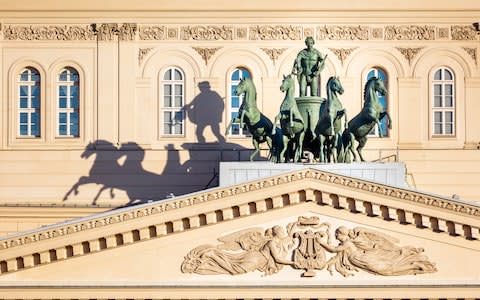
Hermitage Theatre, St Petersburg
This theatre, in the Winter Palace, was commissioned by Catherine the Great in 1783. It is much smaller than the Mariinsky, St Petersburg’s main opera and ballet stage, but it still hosts regular performances and is a great place to get a taste of the golden age of Russian ballet. Tickets via hermitagetheater.com.
Kremlin Armoury Museum, Moscow
Constructed in 1851, the Kremlin Armoury is one of Moscow’s oldest museums. The dazzling Imperial treasures inside its chambers range from Tsar Mikhail’s coronation sceptre to an exquisite ivory egg designed by Fabergé in 1913 to celebrate the 300th anniversary of the Romanov dynasty. Jewel-encrusted portraits of the 18 Romanov tsars adorn the egg, which also opens to reveal a rotating globe showing the empire controlled by Russia under the Romanovs. Admission: £8.50 (kreml.ru/en-Us/about-museums/kremlin).
Church of the Saviour on Spilled Blood, St Petersburg
Organised opposition to the Romanovs’ absolute power grew during the 19th century, culminating in the assassination of Alexander II. Ironically, he was a reformer and moderniser, but he was killed by an assassin’s bomb in 1881. The Church of the Saviour on Spilled Blood was built on the spot where the bomb went off and its golden cupolas and topaz mosaics are an iconic St Petersburg sight. Admission: £3 (eng.cathedral.ru/spasa_na_krovi).
Yusupov Palace, St Petersburg
The palace where the “unkillable” Rasputin finally met his end in December 1916 still attracts thousands of curious visitors every year. The neoclassical Yusupov Palace now incorporates a museum dedicated to telling the story of how an illiterate Siberian peasant rose to the highest echelons of the Russian royal court. Admission: £8.50 (yusupov-palace.ru).
Winter Palace, St Petersburg
The last official residence of the tsars, the Winter Palace played witness to the final days of Russia’s monarchy. The storming of the palace in 1917 marked the beginning of the October Revolution. Behind the green and white baroque façade you can explore 1,500 rooms and 117 staircases. Entry is included in the price of a ticket for the Hermitage Museum (see above).
Grand Kremlin Palace, Moscow
The 700-room Grand Kremlin Palace, the Romanovs’ Moscow residence, contains within its walls several smaller palaces, nine churches and an eclectic mix of Russian, Asian and Italian architectural styles. The magnificent yellow and green building was chosen by Lenin as his new seat of government when the Bolsheviks took power in 1918. Today it houses the office of President Vladimir Putin and can only be visited as part of special guided tours (kremlintour.com).
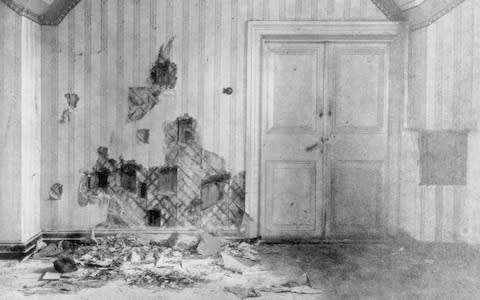
Church on the Blood, Yekaterinburg
This is where the dynasty met its end in 1918. Yekaterinburg’s Church on the Blood was built on the site of the Ipatiev House where the last Romanovs were shot. Every year Yekaterinburg holds a three-day commemoration of the Romanovs, the “Tsar’s Days”, when around 60,000 people parade through the city’s streets.
Cathedral of Sts Peter and Paul, St Petersburg
The cathedral – on Hare Island – houses the tombs of the Romanovs, and in 1998 the bodies of Nicholas and his family were finally laid to rest alongside their ancestors (saint-petersburg.com/cathedrals).

